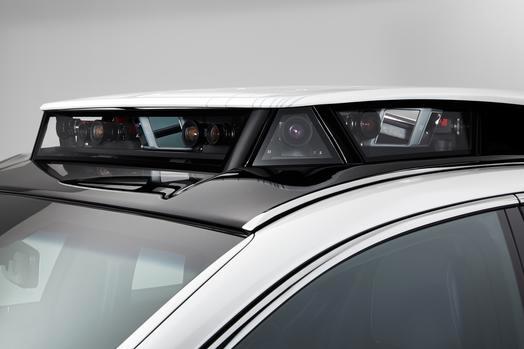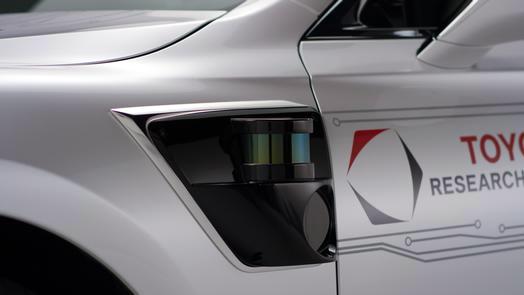Sleeker Looking, More Responsive, Latest Electronic Gear
Yesterday, Ann Arbor, Michigan-based Toyota Research Institute (TRI) unveiled its latest autonomous driving development car at the 2019 Consumer Electronic Show (CES). Called TRI-P4, the new Lexus LS 500h hybrid-based vehicle will join TRI’s autonomous test fleet this spring.

From its beginning three years ago, Toyota’s autonomous research and development focused on two systems, called Guardian and Chauffeur. Guardian is designed “to amplify human performance behind the wheel, not replace it,” Ryan Eustice, TRI’s senior vice president of automated driving, said in a statement. Chauffeur development, meanwhile, “is focused on full autonomy, where the human is essentially removed from the driving equation, either completely in all environments, or within a restricted driving domain,” Eustice said.
TRI-P4 is a huge upgrade over the Platform 3.0 test vehicle, which introduced a number of updates at CES 2018, but was still based on a two-generation-old Lexus LS 600hL. The P4 car “benefits from Lexus’s new generation of chassis and steering control technology, which provides for greater agility and allows for more responsive and smoother maneuvers during automated driving,” according to Toyota.
The Hybrid Advantage
Engineers chose the LS 500h hybrid version because its onboard battery pack can be used to power the sensors and computers needed for autonomous driving. This is why other automakers and tech companies tend to choose hybrids or electric cars as test platforms for their autonomous-driving tech.

Toyota says the P4 has two additional cameras on the sides of the body, and two new imaging sensors — one facing forward, one facing rearward. The imaging sensors also feature new chip technology, and the onboard radar has been tweaked to allow a better field of view, according to Toyota. The lidar system, which includes eight scanners, carries over from the previous-generation test car.
It may be a prototype, but the P4 was designed to function like a normal car. As with its previous test cars, Toyota tried to integrate the sensors with the P4’s bodywork rather than just tacking them on. But what looks like a roof top cargo carrier and cutouts in the front fenders are dead giveaways.
The P4 has greater computing power and the capability for faster learning. It can process sensor inputs faster, and therefore react more quickly to the outside world. The LS 500h’s hybrid battery, which is situated in the trunk, is arranged vertically against the rear seat. This means there’s actual usable trunk space, unlike with the P3 car.

A significant TRI breakthrough in 2018 called “blended envelope control” is incorporated into the new P4. This is where Guardian combines and coordinates the skills and strengths of the human and the machine. The system was inspired and informed by the way modern fighter jets are flown, where you have a pilot that flies the stick, but actually they don’t fly the plane directly. Instead, their intent is translated by the low-level flight control system, thousands of times a second to stabilize the aircraft and stay within a specific safety envelope.
Toyota’s Prototype Development Center in York Township, Michigan, will transform stock Lexus LS 500h sedans into P4 test cars.


3 thoughts on “CES News: Lexus LS 500h Hybrid Is New Self-Driving Test Car”